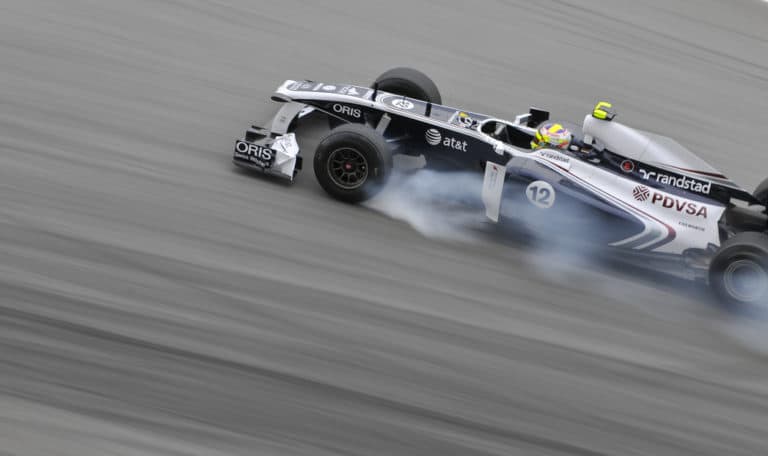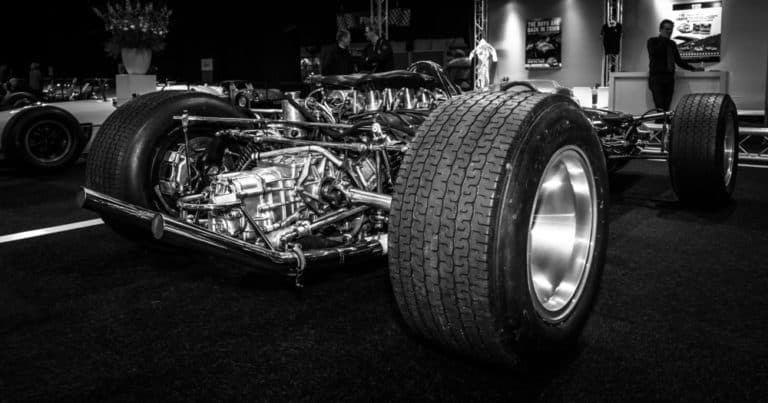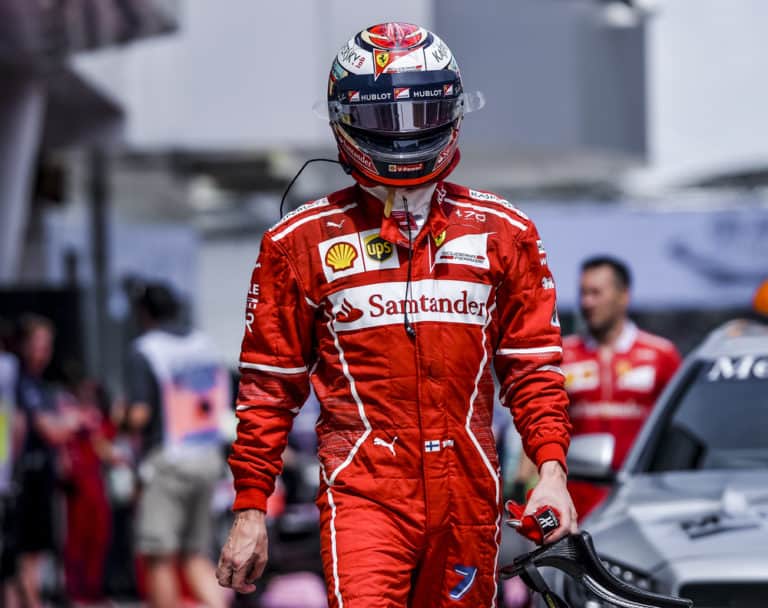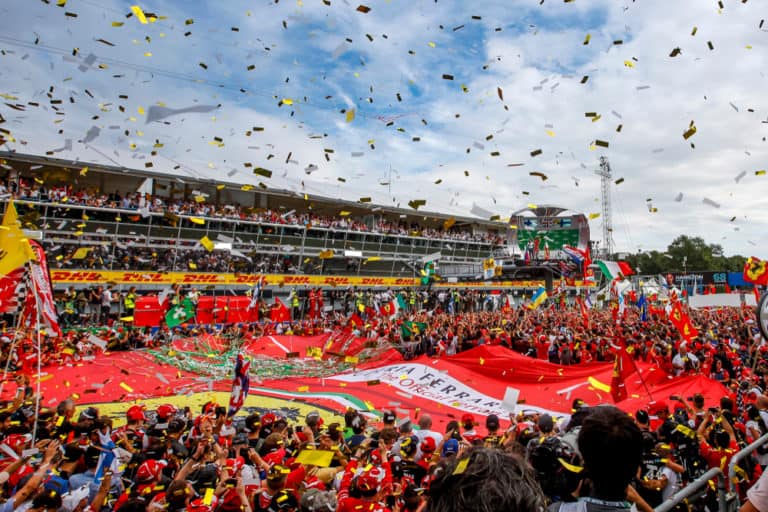Image editorial credit: ZRyzner / Shutterstock.com
23 races, 22 countries, 5 continents, 10 months, back-to-back races, 50 tons of freight per team, and 150000kg of media equipment, Formula 1 is a logistical challenge like nothing else. Cars, spare parts, drivers, team employees, and pretty much everything else you can think have to be transported worldwide. I decided to investigate the inner workings of F1 and find out how those behind the scenes keep the sport that we all love moving.
Everything and everyone needed for a Formula 1 race is transported in one of three ways: by air, sea, or land (in trucks or other vehicles). Air travel is the most expensive, so airplanes are only used in fly-away races and it is reserved for critical equipment. Sea and land transportation is the cheapest and more environmentally friendly than flying, so it is the go-to option whenever possible.
This article will explore how Formula 1 teams move equipment and personnel to different races. It will examine the logistical nightmare of getting everything to track in time for the race weekend and how it is transported there. So, read on to find out how Formula 1 moves between countries.
What Is Needed By Formula 1 Teams During A Race Weekend?
The first and most important thing to look at is who and what is needed at the track for a successful Formula 1 weekend to go ahead.
Some of the team personnel includes:
- Drivers.
- Senior team management.
- Strategists.
- Engineers.
- Mechanics.
- Chefs and support staff.
- Set-up crews.
All of these people get to the tracks in different ways and are all needed at different parts of the weekend.
Some of the equipment needed includes:
- The cars.
- Spare parts.
- Mechanical equipment.
- IT equipment.
- Cooking equipment.
- Tables and chairs.
- Motorhomes and team bases.
- Food (lots of it).
Furthermore, Formula 1 and the FIA (i.e., those in charge of operating the race) itself also needs to transport multiple things and people to the track. These include:
- Senior Formula 1 and FIA management.
- The safety car and medical car operators.
- The safety car and the medical car.
- The Formula 1 motorhome.
- The Formula 1 media centre.
- Media center operators.
Everything mentioned above goes to every race, except for the motorhomes, which only go to European races, where teams can drive the equipment. Therefore, this excludes Russia and Azerbaijan, as they are too far away to drive from Western Europe.
For the European races, everything is driven there by the teams in trucks owned and operated by them. This is the cheapest and easiest option, so it is used where possible. If teams need to fly equipment or send it via the ocean, they do so in conjunction with Formula 1 and DHL, which is their official logistics partner. Later on, we’ll explore what gets transported in airplanes, and what goes by sea when teams are unable to drive their equipment to a racetrack.

How Does Formula 1 Move From Country To Country:
All the Formula 1 teams except Haas are based in Europe, although they have a forward operating base in the United Kingdom to make it easier for staff, as Europe is the center of F1. Therefore, everything that gets transported to all the races is being sent from Europe. Teams usually have between 40-50 tonnes of equipment at each race, which is around double the amount teams had at the start of the century.
As mentioned before, there are three ways to get equipment to a Formula 1 race, and it all depends on the location of the race and how critical the equipment is. Everything is packed into trucks at the racetrack, and these trucks will either continue to the next track, travel to the airport to unload their cargo, or go to the port to put the non-vital containers back on a ship.
This section will explore what gets sent to each race, how it gets there, and why that mode of transport is chosen.
Shipping Equipment To A Formula 1 Race:
Shipping is much more cost-effective and carbon-efficient than flying; however, it is much slower, and as a result, anything that is shipped needs to be sent in advance. At the start of the season, Formula 1 teams will ship five shipping containers full of non-essential equipment to the fly-away (non-European races). Each container will contain around 200 tonnes of equipment.
These sets will then rotate between the fly-away races throughout the season. For example, the container will be packed up after the race in Australia and get sent off to Canada, and then from Canada to Singapore, and from Singapore to Brazil. From Brazil, the container will get sent back to the team headquarters in Europe.
Everything in these shipping containers is deemed non-critical for race performance. This includes jacks, trolleys, tables, chairs, printers, kitchen equipment, exercise equipment, hospitality items, and fan-zone items. These items are relatively cheap compared to the complex IT and mechanical equipment (including cars) that the teams take with them from race to race, which means teams can have multiple sets of them.
In 2019, the five shipping containers were sent from the United Kingdom to Spain, Australia, China, Azerbaijan, and Bahrain. The container in Spain was then driven around by the teams for the European legs of the F1 championship, while the rest of the containers get rotated around the world.
However, in 2021 due to the Covid-19 pandemic, the schedule has changed quite significantly. Bahrain hosted the first race and pre-season testing instead of Australia and Spain, respectively. There is also no race in China, and there are two Italian races, so logistics are somewhat different compared to previous years, but the same things still need to get to the races.
Driving Equipment To A Formula 1 Race:
Driving is the cheapest and easiest option for Formula 1 teams as it is done by their in-house team, rather than an external company. Each team owns a fleet of articulated trucks, and yes Mercedes does use Mercedes trucks. In 2020 it was reported that there were 315 trucks in total used by the teams, F1, the FIA, and Pirelli. These trucks transport anything and everything to the European races. This includes cars, IT equipment, mechanical equipment, spare parts, as well as motor homes, and team bases.
These trucks usually drive non-stop until they reach their destination. To accomplish this, multiple drivers will be assigned to trucks, and sometimes there will be an RV that follows the truck to allow the drivers to sleep when they aren’t behind the wheel. This ensures that there is always a fresh driver ready to take over, so the truck doesn’t have to stop for long.
These trucks carry everything needed for a successful race weekend, and they leave the track as soon as whatever they need to carry is packed and ready to go. Once the trucks get to the next track, they wait for the unpacking team to unload their cargo, and the whole process will get repeated once the race finishes.
Flying Equipment To A Formula 1 Race:
Flying equipment out to a race is expensive because teams have to charter cargo planes to fly everything there. Even though teams share the cost of the planes, it is still a costly (and not very carbon friendly) mode of transport. As a result, planes are only used to transport equipment to races where it is not possible to drive to in a few days. Therefore, equipment will be flown out to races that do not take place in Europe and the races in Azerbaijan and Russia.
The planes are usually chartered by Formula 1 in conjunction with DHL, and the teams are then charged for their share of the cargo space. The equipment is sent out in order of necessity at the other track.
The paneling, IT equipment, and any other things needed in the garage are usually sent out first, as the set-up teams need to make sure the garage is in working order. They do this so the cars and other mechanical equipment like wheel guns can be brought into a working environment. The mechanics and engineers need to arrive at a fully working garage, so the garage components are the first things to get to the new track.
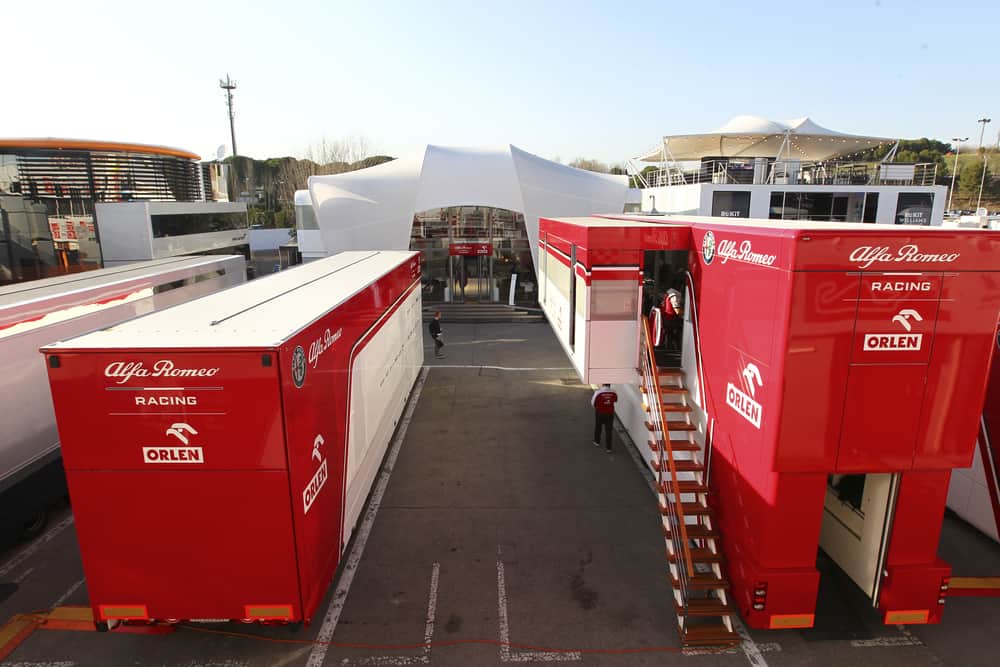
How Is Everything Set Up For A F1 Race Weekend?
Teams bring everything that they need for the race weekend, including generators, motor homes, and pretty much anything else you can think of. For example, Williams needs around 400m of cables to support their IT equipment of 64 computers as well as all the other equipment like wheel guns, spare parts, etc.
For the non-fly-away races, three things have to be assembled by Formula 1 teams. These are the team motorhome, the race base, and the garage. The Williams set-up crew consists of 34 people who assemble everything within 48 hours. Furthermore, Formula 1 must construct its broadcast center, and Pirelli (the tire manufacturer and provider) also builds its own motorhome at the track.
In order to make things fair and to ensure that there are not a lot of people around when trucks are unloading, teams can only start to assemble everything they need once all the cargo is at the track.
What Is Inside A Formula 1 Motorhome?
The motorhomes are very impressive double to triple story structures, complete with anything and everything needed to entertain guests and to keep the drivers and staff fed and entertained. They contain fully-equipped kitchens and restaurants. Most of them have rooftop seating areas with comfortable outdoor furniture and even plants.
The Red Bull motorhome, known as the Red Bull Energy Station, provides facilities for both Red Bull Racing and Scuderia Alpha Tauri. It is constructed out of 25000kg (55115 pounds) of timber, 15000kg (33069 pounds) of glass, and 48000 bolts and is 1221 square meters. Some of the rooms are fully built and have pre-built cabling in the walls, making assembly quicker and easier.
For the Monaco Grand Prix in 2019, Red Bull decided to take their motorhome transportation to the next level. Due to the space constraints in Monaco, they built the entire energy station on a floating barge. The structure was put together in Italy and then sailed 20 miles down the Mediterranean coast to Monaco. The whole thing weighed 300000 kg (661387 pounds), and it had to be carefully maneuvered past superyachts in the Monaco harbor.
You can watch a video on the building and transportation of the Red Bull Energy Station below
The motorhomes also contain rooms for the drivers to relax in between sessions as well as office space for team employees. They also include facilities like interview rooms, so the media teams can keep all the fans up to date with everything happening in the drivers’ lives.
Take a look at some of the motorhomes in this video made by Formula 1.
There have been some talks about scrapping the use of motorhomes in a bid to curb the carbon emissions of Formula 1. As the motorhomes are so large, they need multiple trucks to transport them all around Europe. The issue of transporting motorhomes is exacerbated by the fact that the F1 calendar is not structured in such a way that it minimizes the distance traveled. For example, instead of hosting the race in Hungary after the Austrian GP, which is only 400km away, the teams travel back to the United Kingdom for the British Grand Prix and then back to Hungary for the next race.
Formula 1 CEO Ross Brawn said, “In the future, we want to move to a motorhome or hospitality facility which could be put up with far less impact in terms of logistics and transportation than we have now.” He further stated, “We go to overseas races for example, we got to Baku, and you have a nice set of prefabs all laid out for you. Nobody complains, and it is all workable.” If motorhomes are indeed downsized or gotten rid of in the future, this will reduce the logistical effort of setting up for a Formula 1 race.
What Is Inside A Formula 1 Garage:
The garage area is quite large and extends further back than you see on television. There are obviously two spaces for the cars. There is a central island with computer equipment on both sides of it. This is where the driver’s race engineer and strategists sit. Some team principals, like Mercedes’ Toto Wolff, also sit at the island. There is also some space for computer equipment like laptops on the garage walls, which the mechanics use to check things on the cars.
The garages also have space for all the spare parts for the cars, such as the front wings and other panels as well as engine parts. They also have room for the equipment used by the mechanics and the pit crew. There is also room for all the helmets and other things used by the pit crew.
All the garage fittings must be installed by the set-up crews. This includes cabling, extractor fans, all the paneling with the team’s name and sponsors, and the floor markings indicating which garage belongs to which driver.
Included in all of this is the pit wall, which is where the senior strategists and sometimes the team principal sit. The pit wall contains a large bank of computers kitted out with radios, weather monitors, screens for the race broadcast, and other important information related to the cars.
What Is Inside A Formula 1 Team Race Base?
The race base includes rooms for the engineers and other staff to monitor the race and communicate with people in the team headquarters. It also contains meeting rooms where the drivers, engineers, strategists, and other essential team members can do the race briefing and de-briefing. There is also additional office space for the team principal.
The race base is not as compact as the motorhome, and it contains rooms in trucks as well as containers that have been converted into office space. These are scattered around the motorhome to ensure easy access for all the team members.
The Formula 1 Broadcast Center:
The racing teams do not bring their motorhomes or race bases to any of the fly-away races due to their size, and because the track provides the facilities for these races. However, Formula 1 has to transport its mobile broadcast center to every race, no matter how far away. This center is responsible for controlling the television broadcast that is viewed by close to 500 million people in over 170 different territories.
Thankfully for those involved in setting this huge and complex structure up, its size and capabilities have been significantly reduced to the travel restrictions owing to Covid-19. They reduced the size of the center by half, which eliminated 70 tonnes of freight that had to be brought to the races. The size of the building has been reduced from 50m by 15 m to 25m by 15m, and the traveling staff has been reduced by 36%.
Formula 1 now operates a Remote Technical Center (RMC) based permanently in the United Kingdom, which controls the broadcast footage alongside the event technical center at the track. The Remote Technical Center houses 2160 units of equipment with 53 operational positions complete with 415 monitors in total. The RMC controls the content, data, and feeds that are secured by the onsite Event Technical Center.
This downscaling means that the job of the set-up crew is a little bit easier, as they have much less to unpack and then re-pack once the race is over. It also means less freight and personnel being transported all over the world, which helps reduce the carbon emissions produced by the sport. It is also safer in preventing the spread of Covid-19 as the number of staff traveling has been reduced, which means fewer people can spread the virus.
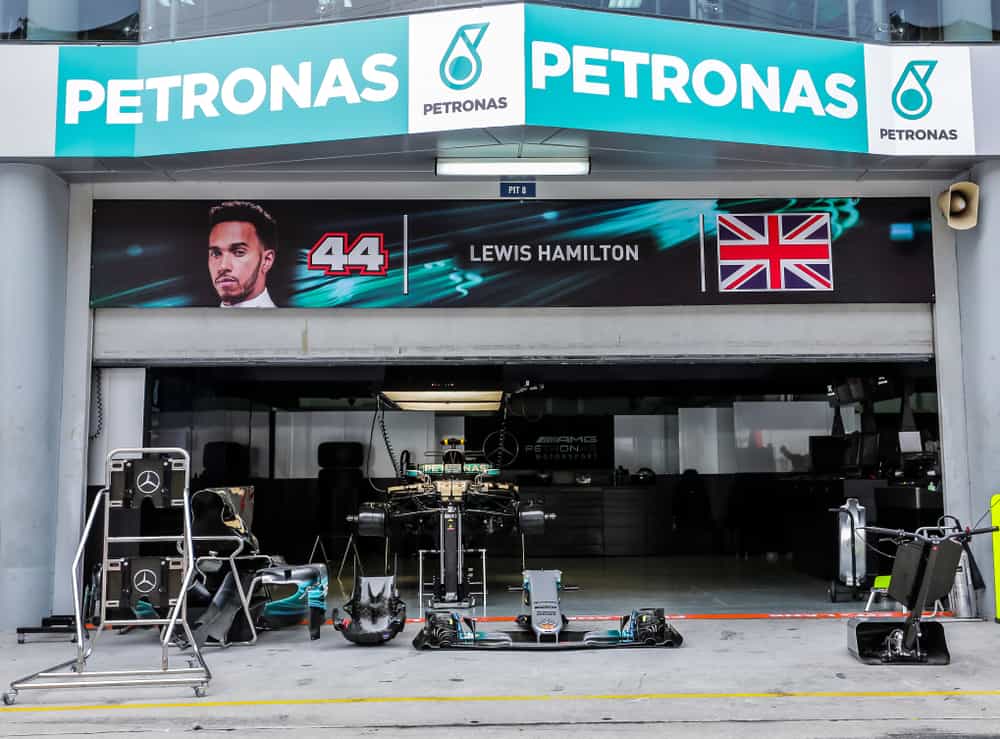
How Is Everything Packed Up After A F1 Race?
The packing up process usually starts while the race is happening. Things like car engines and other spare parts will be packed up during the race because teams don’t have time to change these during a race. The only things that can be changed on the car during the race are the tires, the front wing, and the steering wheel. Therefore, everything else will start getting packed up once the race begins.
Once the race is over, the FIA will weigh the cars to ensure that they are above the minimum weight. After this, the cars are returned to the garage, where they can begin to be disassembled. The cars are stripped down completely, and all the individual components are placed in specially made foam containers. These are sometimes covered with bubble wrap to ensure extra protection.
The motorhomes will also start to be slowly packed up during the race, as some guests will still be there. Once the race is done and all the guests have left, the motorhome will be properly disassembled. Everything inside it, including all the furniture, kitchen equipment, food, and even pot plants and trees needs to be packed up, so the actual structure can be taken apart.
The set-up crew will do the initial disassembly, and then once the race is done, the mechanics, engineers, and other staff will join them and help pack up the garage. This packing up will be completed on the day of the race, which means that the teams work late into the night to disassemble and pack their equipment into the trucks.
How Do F1 Team Personnel Get To Races?
The answer to this depends on how much that team member is paid and where the race is. Teams usually take around 100 people to each race. If the race is in the country where the drivers live, they will often drive there from their house. When the Grand Prix is in Monaco, some drivers might even walk from their houses to get to the track, due to the hectic traffic in the principality.
McLaren F1 team CEO Zak Brown says he enjoys the British Grand Prix that is hosted at Silverstone Racetrack, which is very close to most of the teams’ headquarters. He said, “It’s nice because it’s the only race where you drive your own car to the track and sleep in your own bed at night.”
For races further away, drivers and team personnel will fly there. When the races are on the other side of the world from where drivers live, they will often fly on commercial planes (of course they fly business or first class). For races in Europe, drivers will often charter private jets, either for themselves and their immediate family and trainers or to be shared by multiple drivers. The team principals senior engineers, and strategists will also either fly on private jets or on first or business class.
Lewis Hamilton even used to have his own private jet; however, he sold it in 2019 as part of a commitment to be more environmentally friendly. He now flies on commercial flights, and only drives an electric Mercedes Benz.
Unfortunately for the mechanics and other support staff, they are not afforded the same luxuries as the senior team members, as they have to fly coach/economy class to get to the races.
The flyaway races are extremely tough for the mechanics and other support staff, as they have to spend more time at the track. As a result, when there are double-headers outside Europe, the mechanics will often not travel back to the team base due to the cost and the time it takes to travel all that way. This means they do not get to spend much time with their families during the fly-away legs of the season, unlike the drivers who immediately head home after the race weekend.
Conclusion
Formula 1 poses one of the biggest logistical headaches in the world. Everything teams need to be transported to the different racetracks all around the world. Teams arrive to empty garages and paddocks and have to do it all themselves in order to make it feel like ‘home.’
F1 teams have dedicated drivers and set-up crews to ensure that everything gets to the track and is assembled in time. These teams work extremely hard and often late into the night, but they get the job done, and they are responsible for ensuring that the spectacle of Formula 1 runs as smoothly and efficiently as it does.


